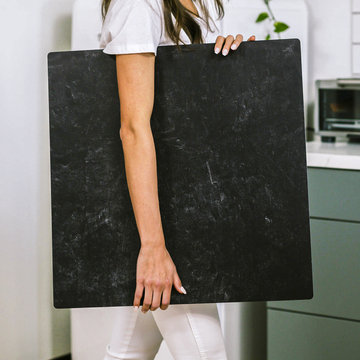There’s more to taking eye-popping cake photos than placing a dessert on a “pretty” surface. If you’ve ever found yourself frustrated by why your cake looks flat or off-color in your shots-despite choosing a stylish backdrop-it’s time to look deeper. The secret? The surface you choose is more than just a background; it’s an optical partner, subtly shaping your photos with every detail, texture, and reflection.
Let’s move beyond the basics and discover how smart choices in cake photography backdrops can transform your images from simple snapshots into stunning, scroll-stopping visuals. Whether you’re a baker, a business owner, or a passionate creator, these insights will give you a new perspective-and the practical edge-on every shoot.
Backdrops: More Than Meets the Eye
Most guides will say “choose a complementary color” or “find a rustic wood look.” But if you want your cake photography to stand out, understanding how light and surface interact is the real game changer.
- Glossy Surfaces: Reflect light, creating bright highlights that can either draw the viewer’s eye or cause distracting glare-especially tricky with glossy glazes or icings.
- Matte Textures: Absorb stray light, gently wrapping your cake in soft, even illumination. This effect is perfect for elegant, sophisticated cakes where you want an understated look.
- Microtextures: Subtle veins, linen imprints, or stand-out grain don’t just look interesting; they help shape soft shadows and delicate transitions, echoing the fine crumb or swirls on your cake’s surface.
Tip: Velvet-matte or soft-touch synthetic surfaces are ideal for diffusing harsh light and keeping your cake’s details in the spotlight.
The Truth About Color: Get It Right Every Time
If customers order a lemon cake but photos make it look vanilla, you've got a problem. Backdrop color accuracy is an often-overlooked secret weapon for true-to-life cake images.
- True Neutrals: Not all “neutral” backdrops are created equal. Some have subtle undertones of blue, yellow, or gray that can throw off your camera’s white balance under household lights.
- Color Fidelity: The best backdrops reflect all colors evenly, ensuring your cakes look just as they do in real life. Professional-grade surfaces are designed for a flat, accurate spectrum.
Pro tip: Use a color calibration chart to test your backdrop under your usual lights, and stick with the ones that make your cake look mouthwateringly real.
Backdrops as Storytelling Tools
Backdrops aren’t just decoration-they’re props that set the mood, tell a story, and create context. Thinking like a set designer can take your cake photography to the next level.
- Architectural Illusion: Panels, trims, or subtle 3D textures can give your photo the illusion of a beautiful room, adding sophistication and interest.
- Layering: Combine surfaces at different angles (a standing wall, a tabletop, a riser underneath) to give your scene real dimension and help your cake leap off the page.
Advanced Tricks: Hybrid Effects and Reflective Setups
Ready to experiment? These rarely discussed techniques can elevate your cake photos in creative and unexpected ways:
- Glass Over Texture: Place frosted acrylic or glass over a textured surface. This softens the pattern beneath, creating beautiful depth and subtle background bokeh-especially magic with mirror-glaze cakes.
- Custom Shadow Tints: Use a gold or silver reflector behind your backdrop, angled to tint only the shadows on your cake for a warm or cool effect-no Photoshop needed.
Common Pitfalls (and How to Dodge Them)
Even seasoned creators hit a few snags. Here are hidden hazards to watch out for, along with easy solutions:
- Specular Overload: Too much gloss creates unruly highlights, especially with shiny cakes. Solution: Go matte or diffuse your light.
- Moiré Issues: Fine-fabric textures can look odd on high-res cameras. Always zoom in and check your test shots!
- Sugar & Dust Drama: Dark or smooth surfaces spotlight every crumb and droplet. Keep a soft brush handy and a flashlight to spot-check before shooting.
Bringing It All Together
Every decision you make about your cake photography backdrop-material, color, texture, and setup-counts toward the final, drool-worthy photo. Treat your backdrops as optical collaborators, not just background scenery. Understand how they behave with your lights and camera, choose for accuracy as well as style, and experiment with hybrid and layered looks for editorial-quality results.
Ready to elevate your cake photography beyond the ordinary? Try these tips, share your results, and show off your creations. With the right surface, you won’t just be taking pictures-you’ll be crafting scenes your audience remembers.


